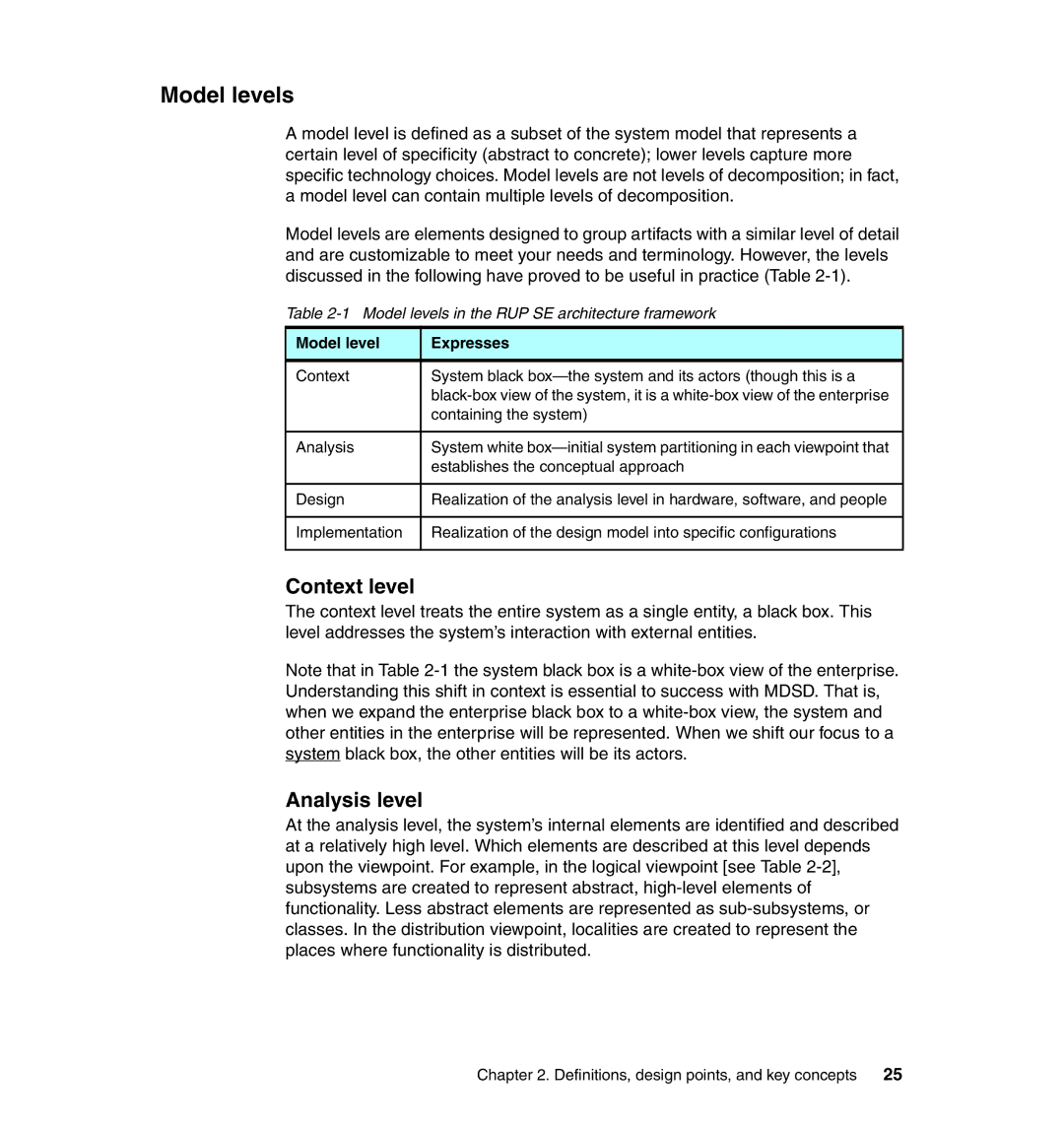Model levels
A model level is defined as a subset of the system model that represents a certain level of specificity (abstract to concrete); lower levels capture more specific technology choices. Model levels are not levels of decomposition; in fact, a model level can contain multiple levels of decomposition.
Model levels are elements designed to group artifacts with a similar level of detail and are customizable to meet your needs and terminology. However, the levels discussed in the following have proved to be useful in practice (Table
Table | Model levels in the RUP SE architecture framework | |
Model level | Expresses | |
|
|
|
Context |
| System black |
|
| |
|
| containing the system) |
|
|
|
Analysis |
| System white |
|
| establishes the conceptual approach |
|
|
|
Design |
| Realization of the analysis level in hardware, software, and people |
|
| |
Implementation | Realization of the design model into specific configurations | |
|
|
|
Context level
The context level treats the entire system as a single entity, a black box. This level addresses the system’s interaction with external entities.
Note that in Table
Analysis level
At the analysis level, the system’s internal elements are identified and described at a relatively high level. Which elements are described at this level depends upon the viewpoint. For example, in the logical viewpoint [see Table
Chapter 2. Definitions, design points, and key concepts | 25 |
